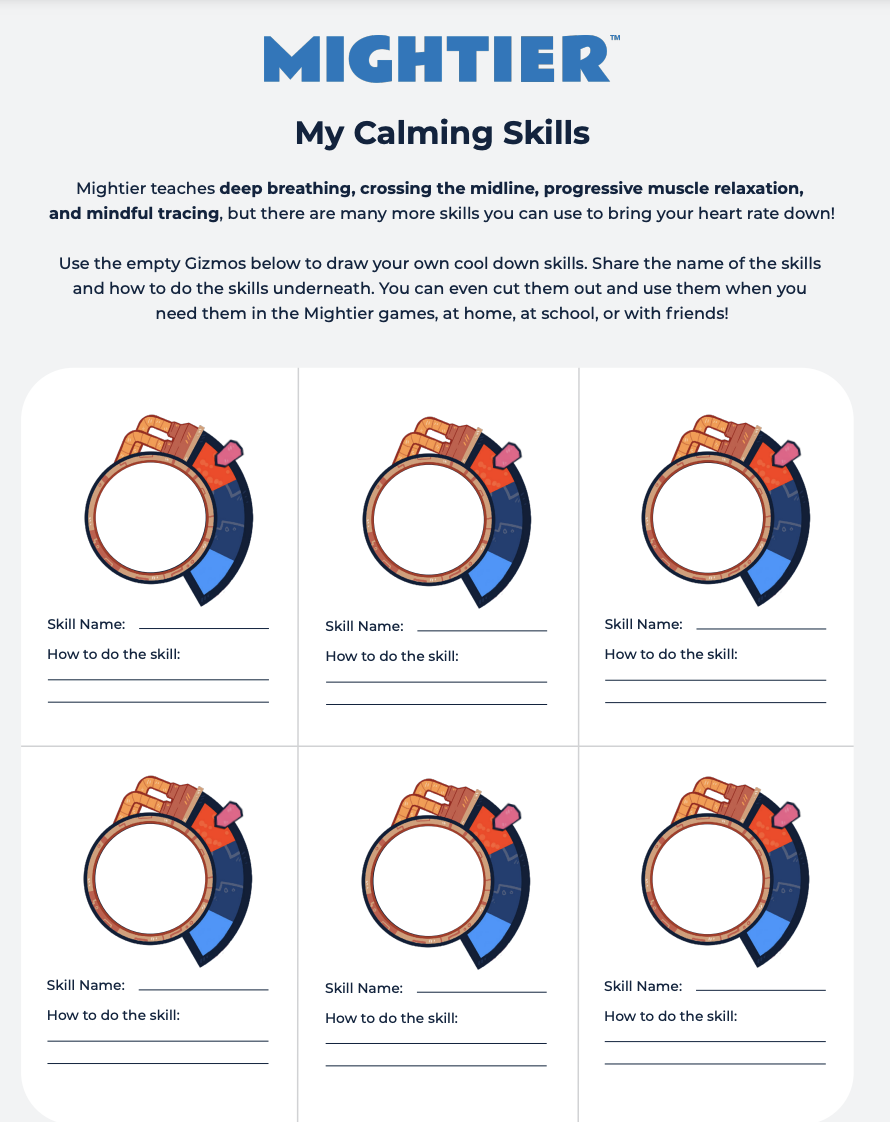- 15 to 20 minutes
- In person
- Teletherapy

Overview
This creative activity helps clients think about new skills that may be helpful for bringing their heart rate down while experimenting to see what may be most effective for them.
Time in Mightier program
Weeks 6+
Therapeutic Goals
- Provide psychoeducation regarding calming skills
- Develop implicit and explicit calming skills
- Practice self-reflection
- Support the client’s understanding and enjoyment of Mightier
Documentation Suggestion
Client and clinician engaged in an art based intervention focus on coping skill development using the Mightier biofeedback tool. This intervention focused on providing psychoeducation around coping skills, developing implicit and explicit coping skills, and practicing self-reflection
Materials needed

Mightier tablet

Heart rate monitor

Paper

Writing utensils
Step-by-step instructions
- Ask your client what they have noticed as a helpful way to get back down to the blue in Mightier. They may mention Mightier calming skills or others.
- Provide psychoeducation around calming skills and how they work using the script below (or something similar):
I can tell you have been working hard to learn skills that bring your heart rate down. That is great! There are many different calming skills that help people to calm down in real life and that help to bring kids back down to the blue in Mightier. There is no “right” calming skill, everyone is different, and finding what works for you best is important! - Explain that today you are going to try out your client’s own ideas for calming skills.
- Ask your client to draw pictures of at least 4 calming skills that they have tried or would like to try to help them go from the red to the blue that are different than the calming skills that Mightier teaches. (You can also download the optional worksheet). If they need suggestions or are feeling stuck, provide examples.
- Once your client has identified what skills they would like to try, ask them why they picked these skills and why they think they would be helpful.
- Have your client put on their heart rate monitor and turn on their tablet.
- Ask your client to get their heart rate up to the red. Encourage them to do jumping jacks, run in place, hold their hands over their head, dance to a favorite song, etc.. (You can also do this with them to help with adherence)
- Once the child shares they are in the red encourage them to try out one of the skills they listed. (You can do the skill along with them to help with adherence).
- Once they are back in the blue, ask your client what they noticed about using this skill.
-How did it feel to use the skill?
-What did you notice about your heart rate?
-What did you like about using this skill?
-What did you not like about using this skill?
- Encourage your client to try using these skills inside the Mightier games and in situations outside of Mightier that may be challenging. Brainstorm with your client potential ways to use these skills.
- Repeat this process for the other skills the client has identified in this session or in subsequent sessions.
*Some clients may want to make a calming skills toolbox or calming skills ring of skills to serve as a reminder of skills. These can be on sheets of paper or can be drawings or cards that the client makes.
*You can also use the “Calming Skill Cards” activity in the Clinician Toolkit as an example of potential skills for clients to try.
